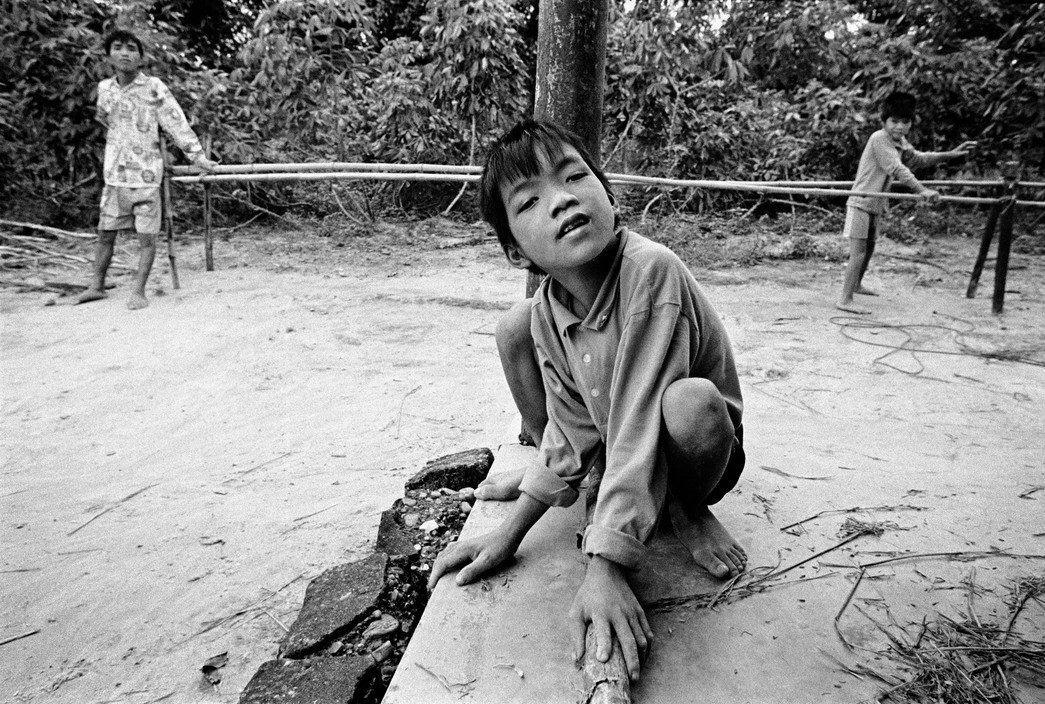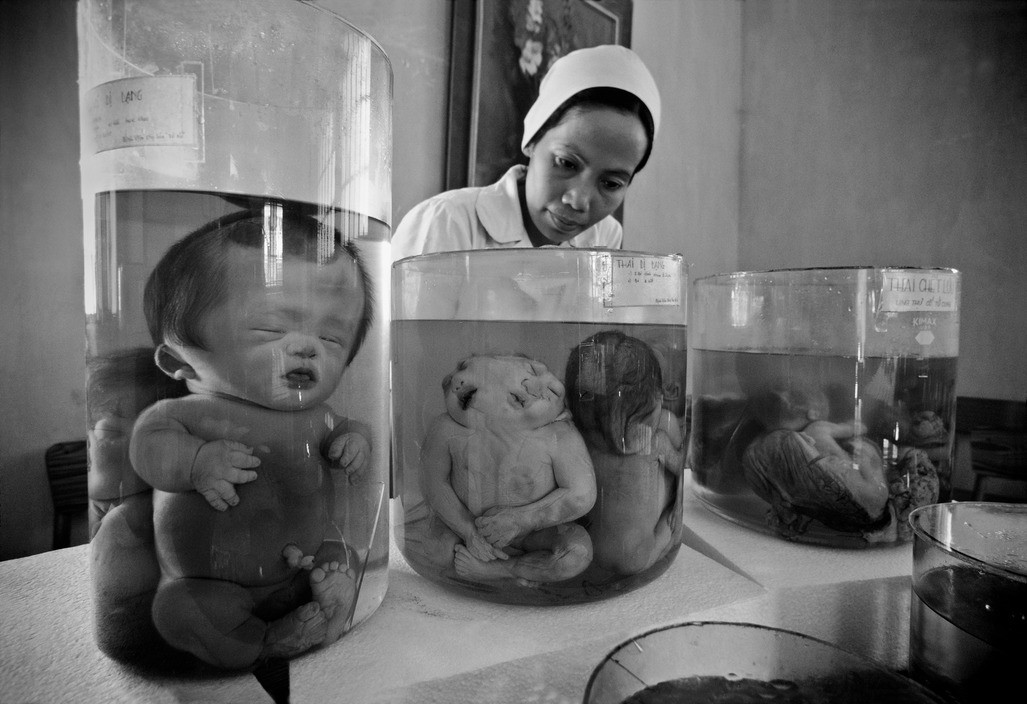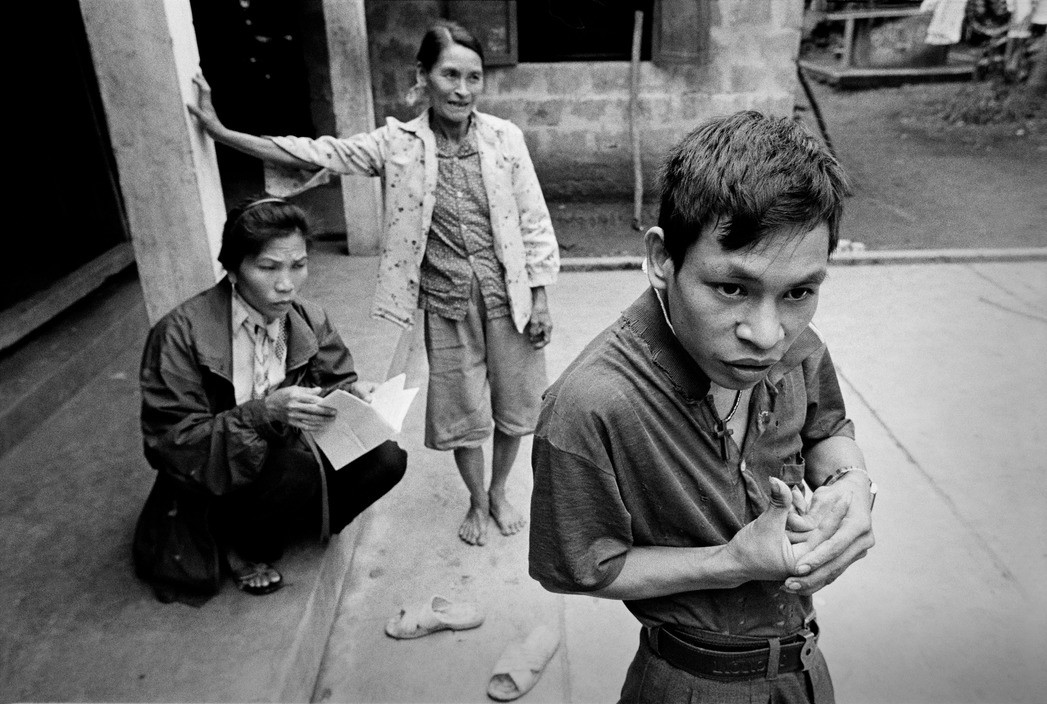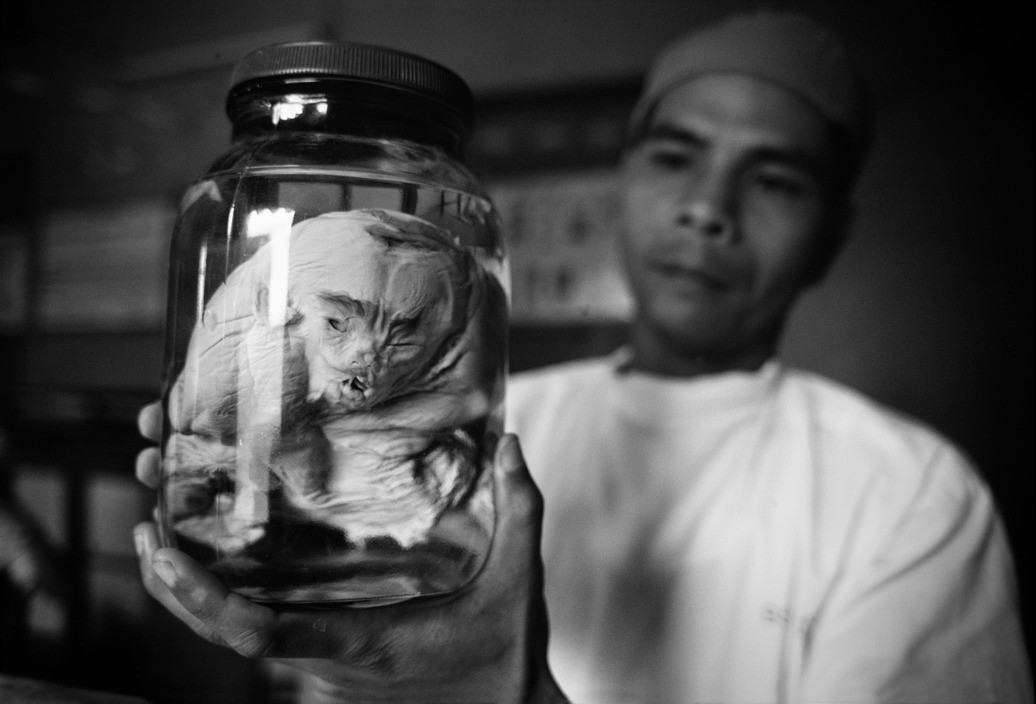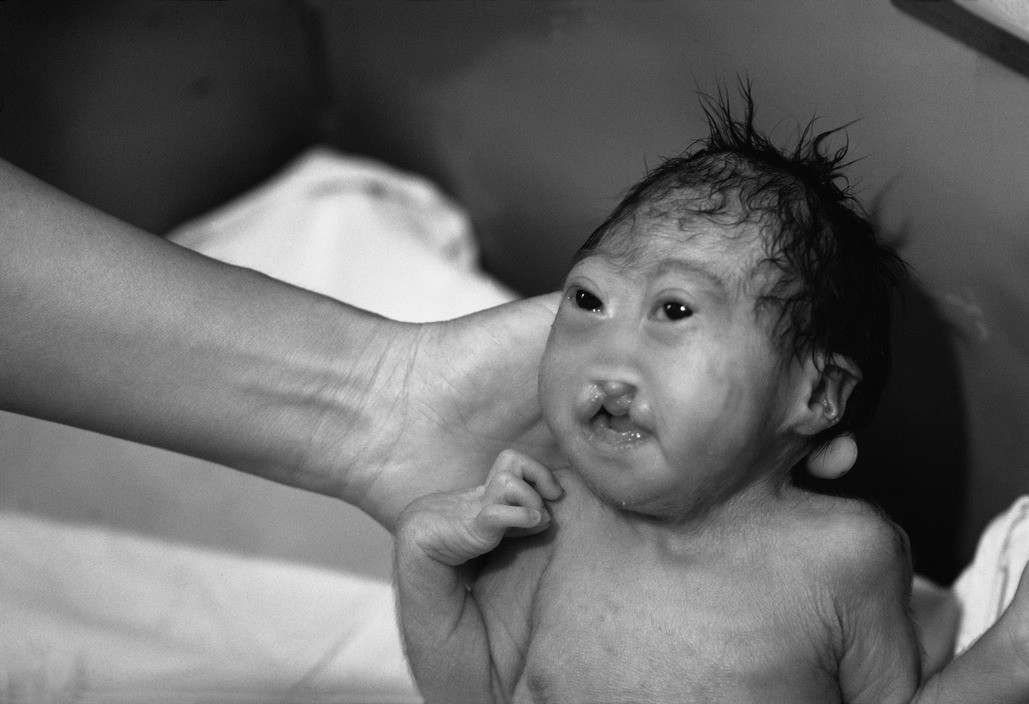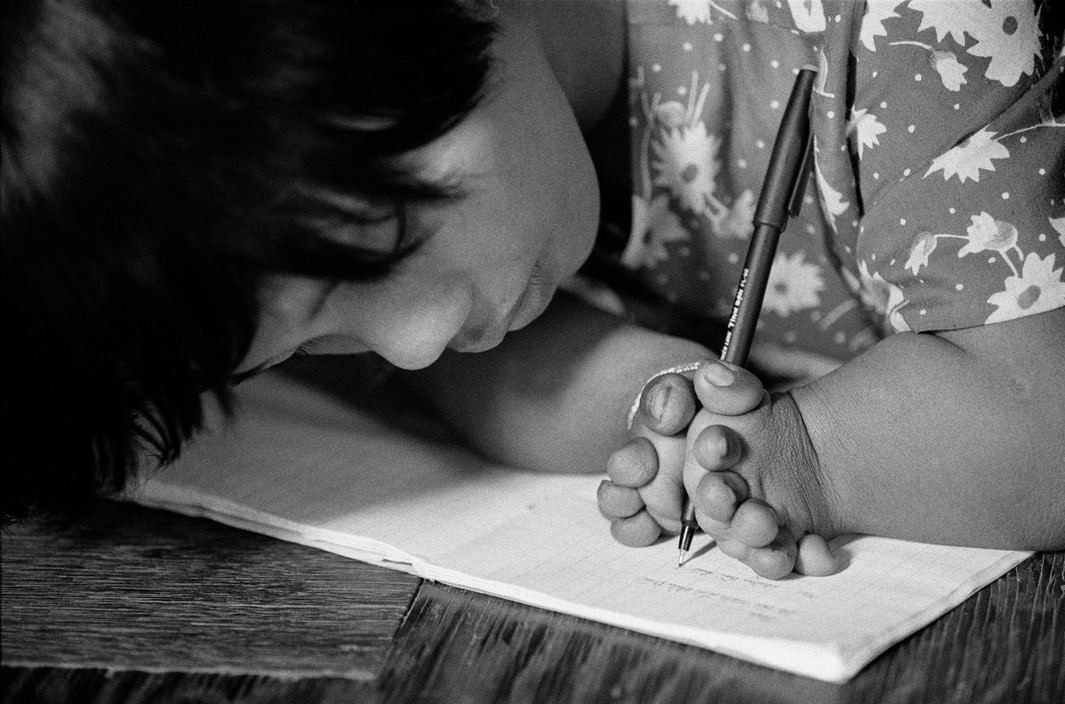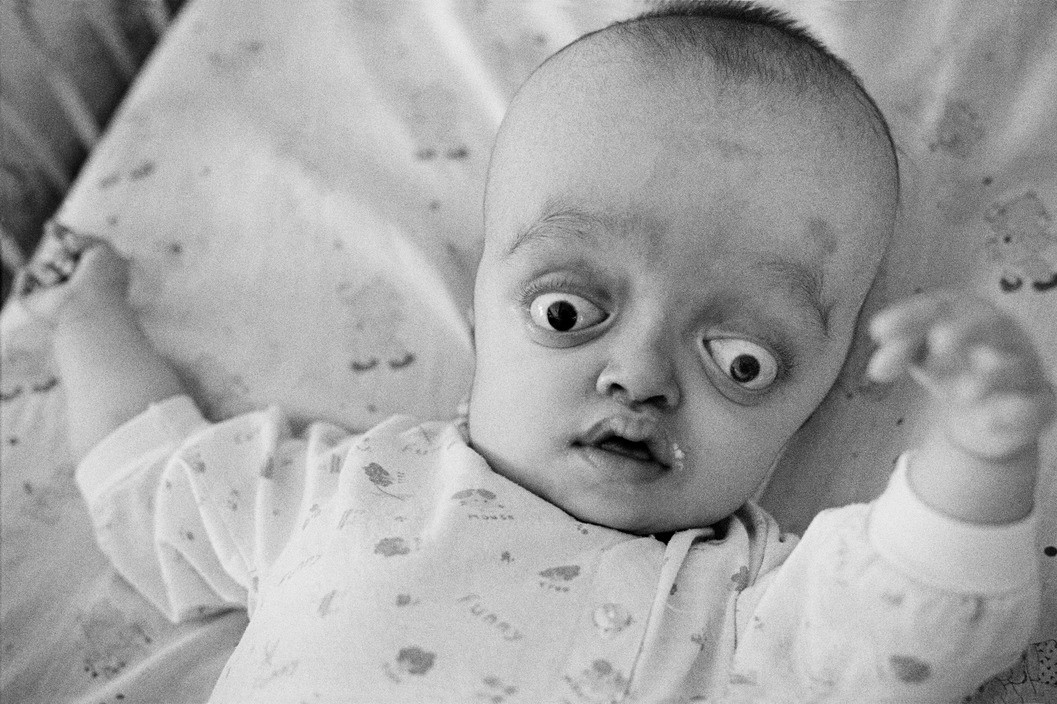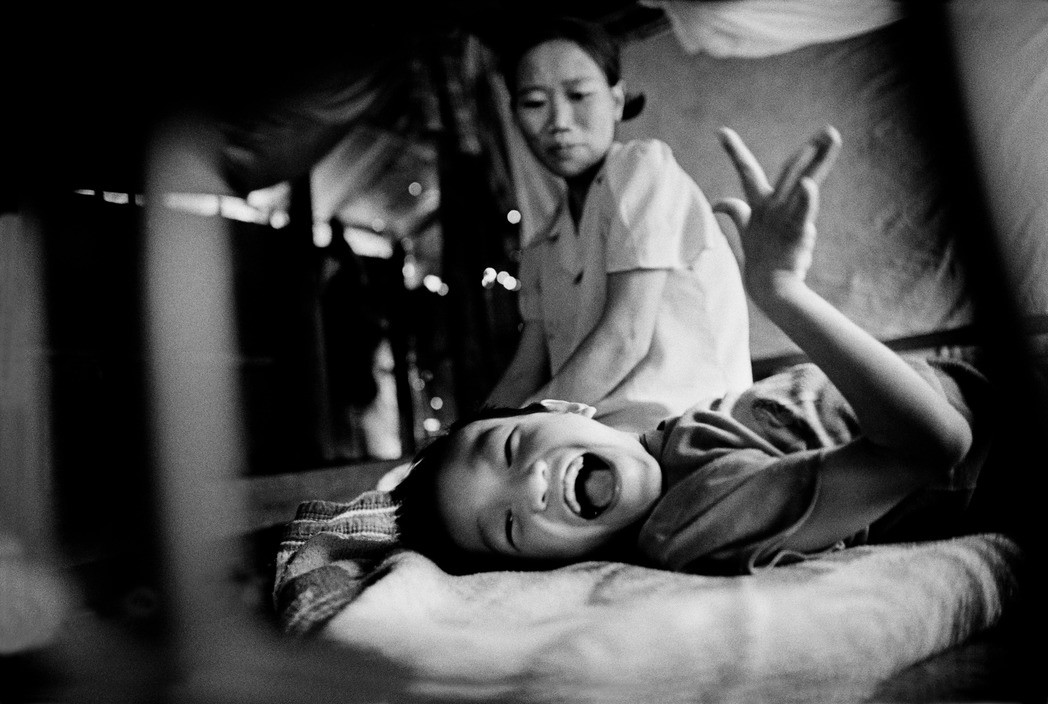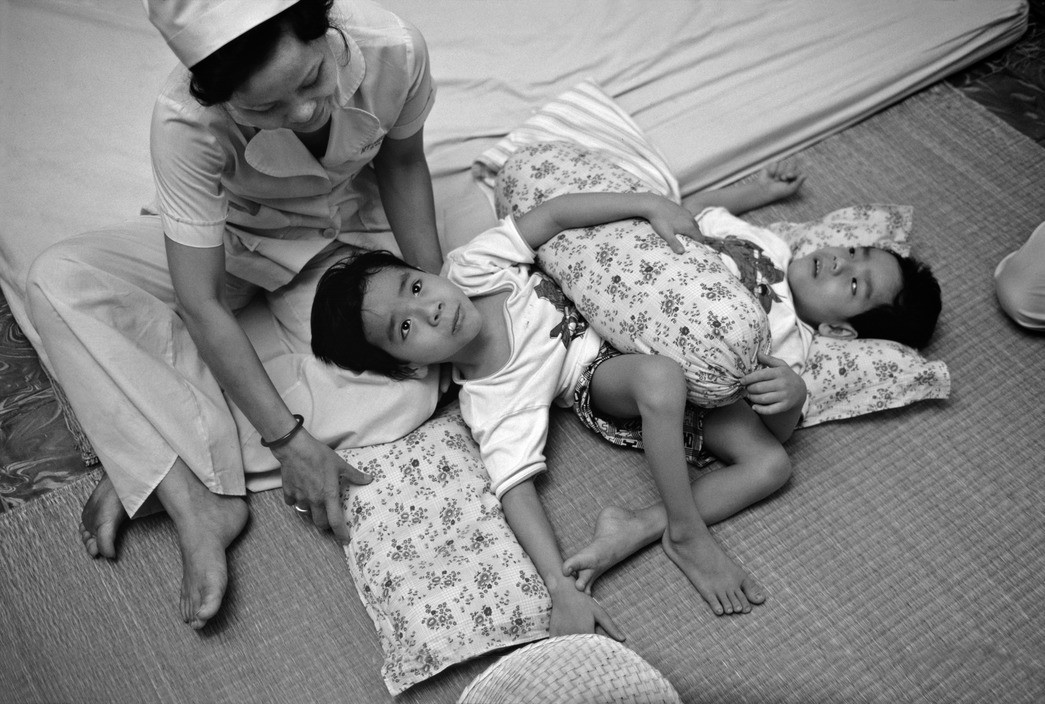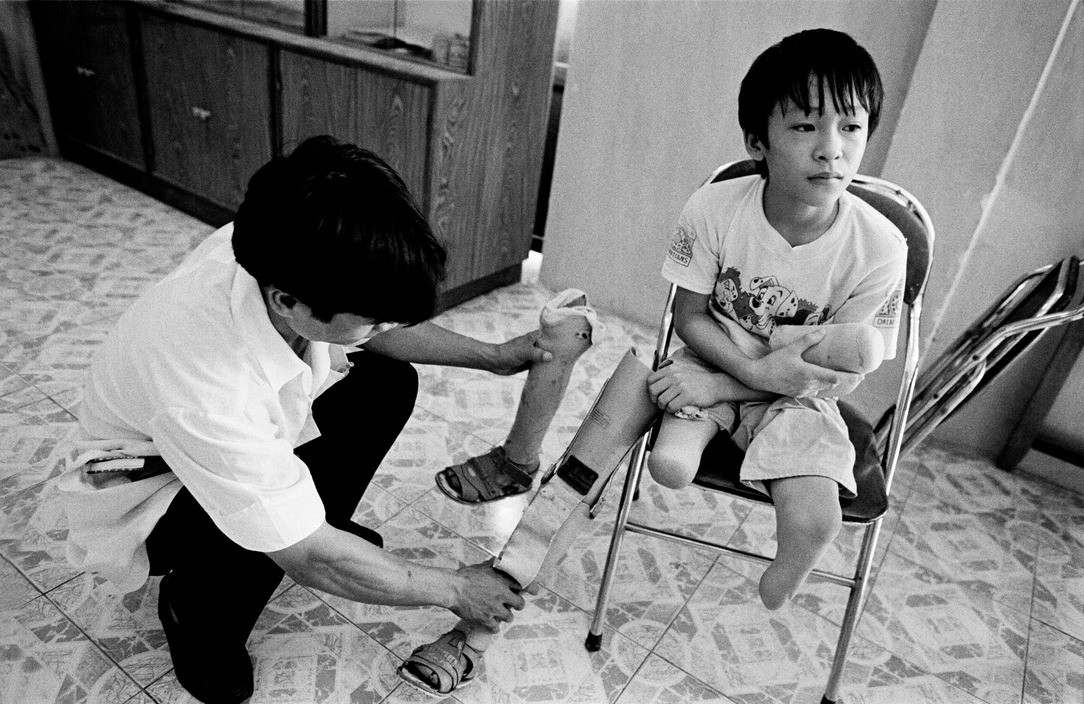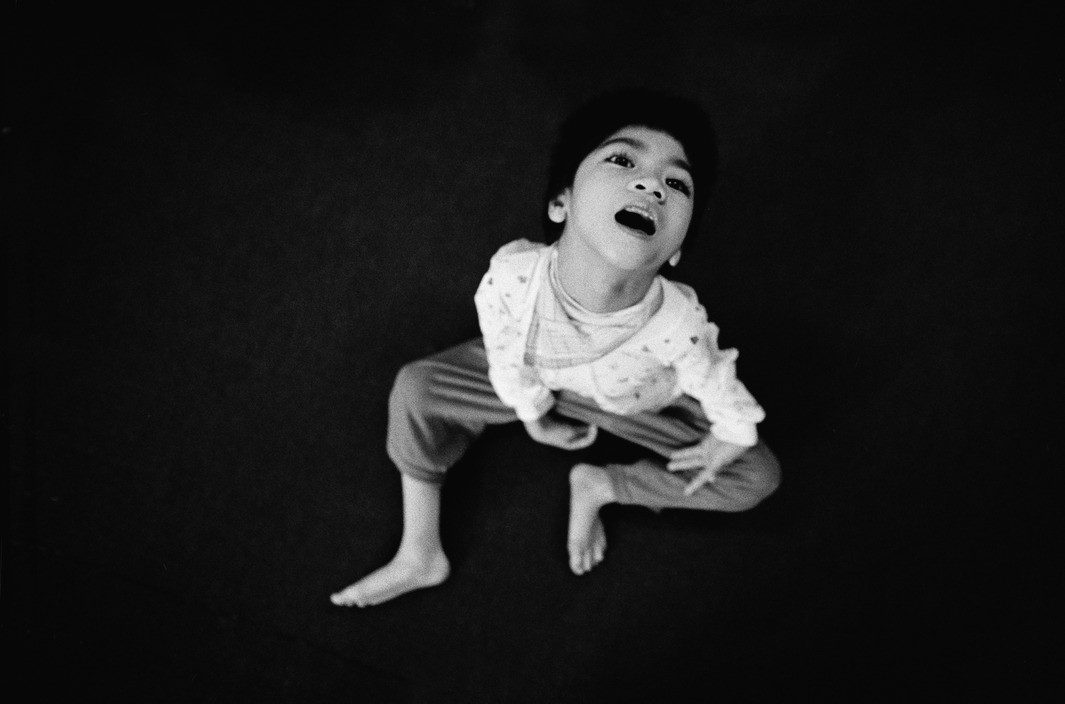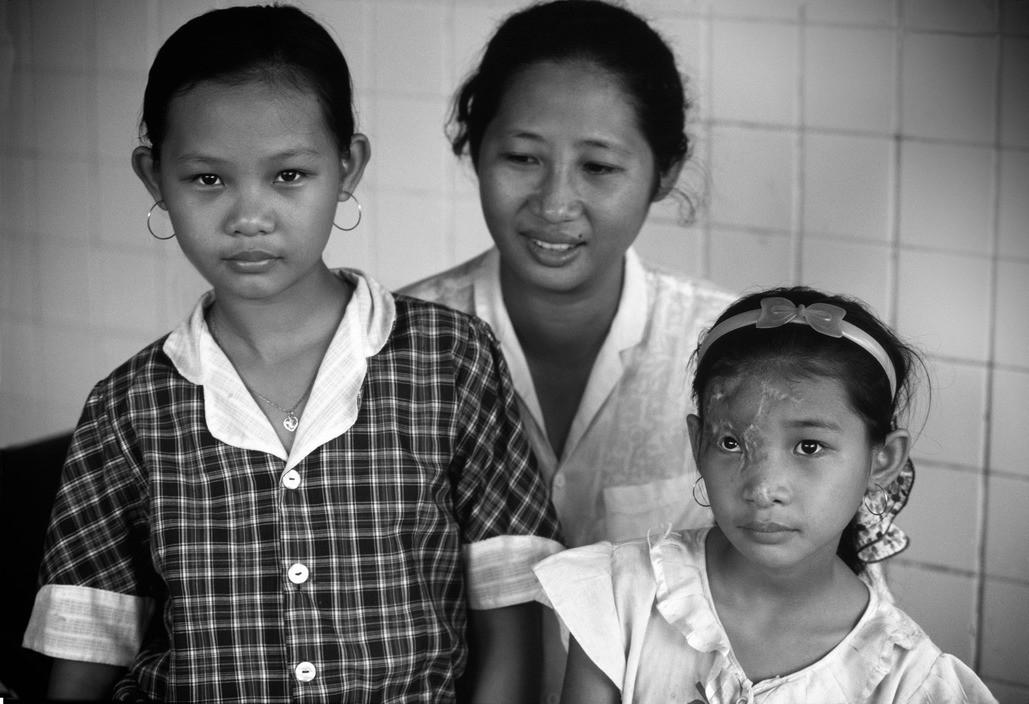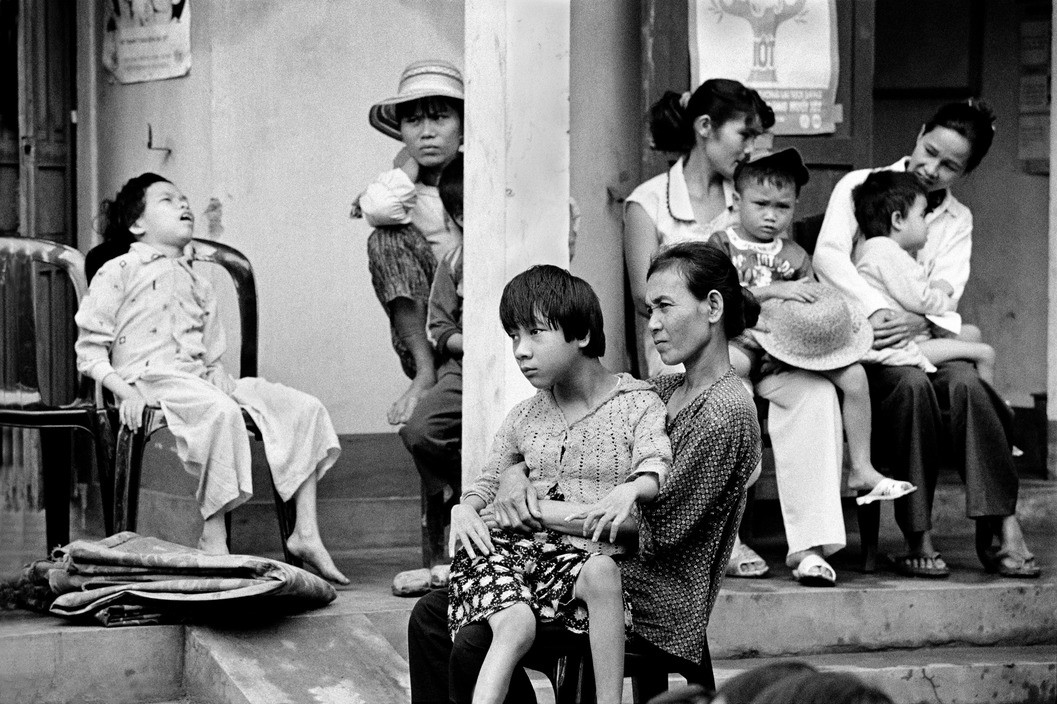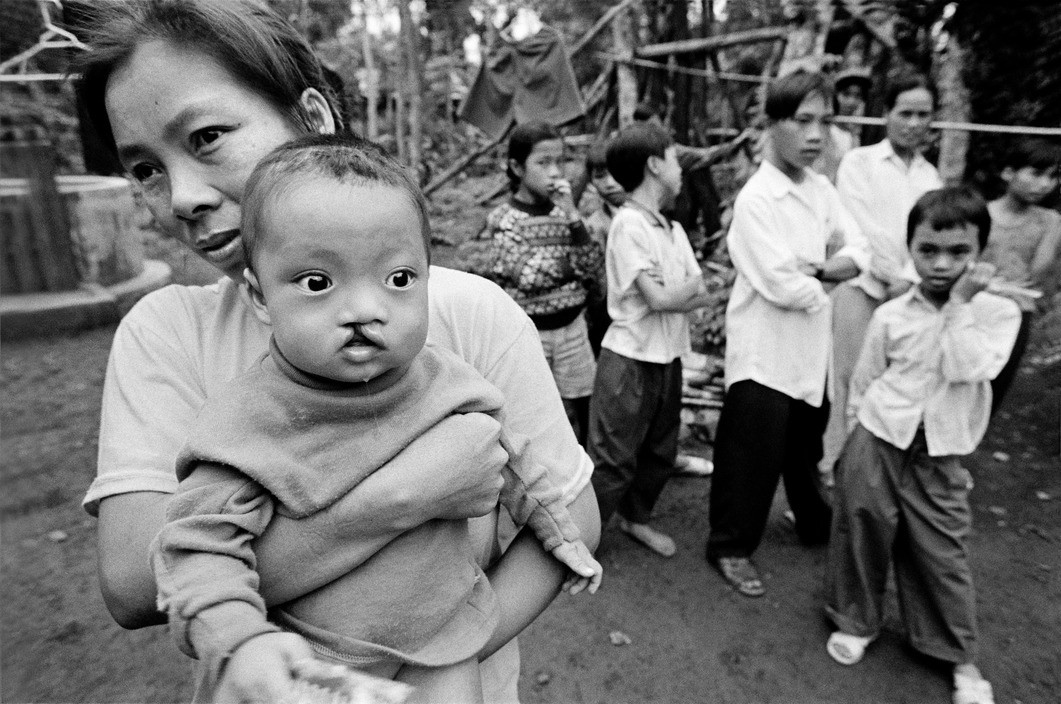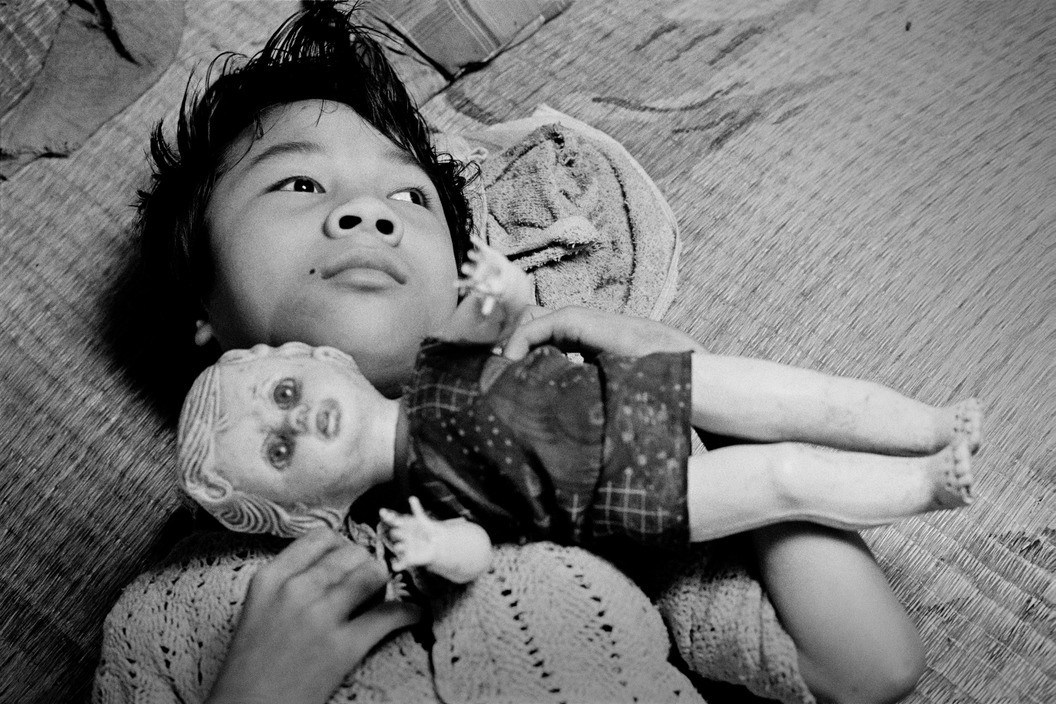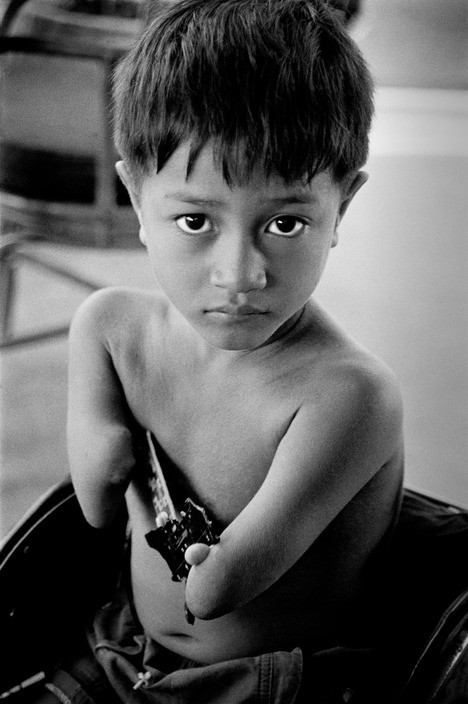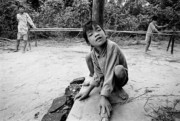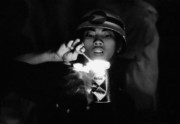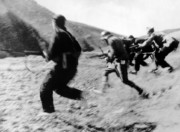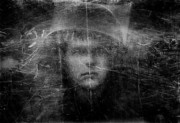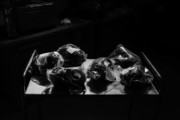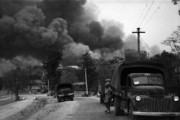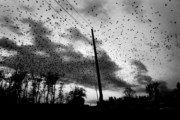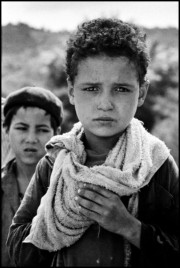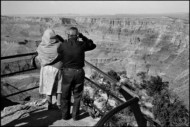Agent Orange: Collateral Damage in Vietnam
Between 1961 and 1971 the United States dropped approximately 46 million litres of Agent Orange, war photographer Philip Jones Griffiths documents the on-going tragedy
Agent Orange is, in some ways, Phillip Jones Griffiths’ epilogue to his other great works. It reflects not only his commitment to a valid, if cataclysmic, explanation of war, but also to the people of Vietnam.
In these pages are the Vietnamese and Cambodians that American tourists never see or hear about. Here are the results of the U.S. spraying the virulently poisonous chemical Agent Orange over these countries. Never has its effects on humans been so clearly shown as in this book by Griffiths, one of the greatest photographers of the war, who felt we should see what Agent Orange, and the United States government, had done. It is almost unbearable, but to turn away and not see the photographs is to compound the crime.
In Agent Orange, Griffiths has photographed the children and grandchildren of the farmers whose faces were lifted to the gentle rain of the toxic cloud. Griffiths has catalogued a damning series of photographs, and there can be no doubt that they will be recognized as evidence of a chilling campaign that left a legacy of disease and mutilation.


